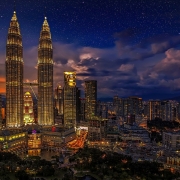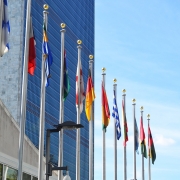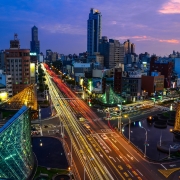How did Singapore achieve rapid economic growth?
Singapore: An Asian Tiger
Ever since Singapore achieved independence in August 1965, the government embarked on an ambitious goal of transforming the young nation into a bustling, modern country that has become the role model for others. From independence to 1997, Singapore has been recognised as one of the front runners in Southeast Asia. Today, Singapore is known for many things, including financial and tourism activities.
Topic of Study [For H2 History Students]:
Paper 2: Economic Development after Independence
Section B: Essay Writing
Theme II Chapter 1: Paths to Economic Development
1959 to 1965: Merger & Separation – Singapore’s path to independence
Before Singapore began its rapid economic transformation, the British colonial rule played a crucial role in providing the infrastructure and systems to commence this phenomenal change. In particular, the British capitalized in the strategic location of Singapore in the Southeast Asia to develop it for entrepôt trade.
Additionally, migrants from other parts of Asia began to set foot in the ‘Little Red Dot’, thereby providing labour for manufacturing and services. However, the devastation of the World War Two can be observed, such as the destruction of public infrastructure.
On 5 October 1960, Albert Winsemius was invited by the United Nations Development Programme team to review the country’s ability to carry out industrialisation. Winsemius concluded in the report that high-tech industrialiastion was indeed important, as well as the promotion of foreign investment. As such, the government developed the Jurong Industrial Estate, marking the first step towards industrialization.
1965 to 1985: An outward-oriented approach
Following the sudden declaration of Separation, Singapore had to contend with its own small market, which lacked natural resources that other neighbouring countries possessed. Furthermore, the British declared its intent to withdraw by 1971, which meant that Singapore would have lost a major source of employment and economic growth.
In contrast to other Southeast Asian economies, Singapore began its export-oriented industrialisation (EOI) strategies much earlier. The purpose of EOI was to address the above-mentioned challenges, such as the reliance on trade and foreign investment to propel growth. For example, policy incentives were introduced, like the Economic Expansion Incentives Act (1967) that lowered taxation for specific industries.
Additionally, the government tapped on its only available resource – labour – to enhance its international competitiveness. Vocational training institutes were established to equip its citizens with the skills and knowledge to support the multinational corporations (MNCs). On 1 April 1979, the Vocational and Industrial Training Board (VITB) was formed to facilitate the training of workers in the ‘commercial, industrial and service sectors’.
The government’s efforts had paid off, as seen by the rapid economic growth and falling unemployment rates. EOI and the attraction of foreign investment have led to the influx of foreign companies, which contributed to job creation and higher industrial output.
1985 to 1997: Adaptation to changing economic conditions
However, there were setbacks that limited the extent of Singapore’s economic success. Notably, the Crisis Decades in the 1970s, led to an economic recession in 1985. By opening up the nation to trade, it became vulnerable to external shocks.
Nevertheless, effective adaptation has ensured that the Singapore economy remained resilient in the face of such challenges. For example, Singapore focused on a productivity-driven growth through the’wage shock therapy’ from 1979 to 1981. The 1985 recession prompted the government to reduce Central Provident Fund (CPF) contribution rates to keep cost of production low. This response was critical as it helped to maintain employment at low and stable levels.
Finally, economic restructuring was carried out, in response to the Strategic Economy Plan (1991) by the Economic Planning Committee. Its purpose was to maintain the country’s international competitiveness through economic diversification. Therefore, heavy investment was made to develop the financial and tourism sectors.
Concluding remarks
In summary, the Singapore government’s consistent policymaking and responses to economic challenges have played a major role in realising the aims set by the ‘founding fathers’ of the young nation. As of 2017, Singapore’s Gross Domestic Product (GDP) is estimated at US$329.91 billion, demonstrating their successful efforts.
What can we learn from this case study?
Consider the following questions to understand this country-specific case study:
– How far do you agree that the promotion of foreign investment was the most important factor in explaining the economic transformation of Singapore after independence? [to be discussed in class]
In view of the Singapore case study, it is imperative that you apply your knowledge to practice questions. Sign up for the JC History Tuition and learn how to organise your answers and provide well-analysed arguments to ace the GCE A Level History examinations.
The H2 and H1 History Tuition feature online discussion and writing practices to enhance your knowledge application skills. Get useful study notes and clarify your doubts on the subject with the tutor. You can also follow our Telegram Channel to get useful updates.
We have other JC tuition classes, such as JC Math Tuition and JC Chemistry Tuition. For Secondary Tuition, we provide Secondary English Tuition, Secondary Math tuition, Secondary Chemistry Tuition, Social Studies Tuition, Geography, History Tuition and Secondary Economics Tuition. For Primary Tuition, we have Primary English, Math and Science Tuition. Call 9658 5789 to find out more.




